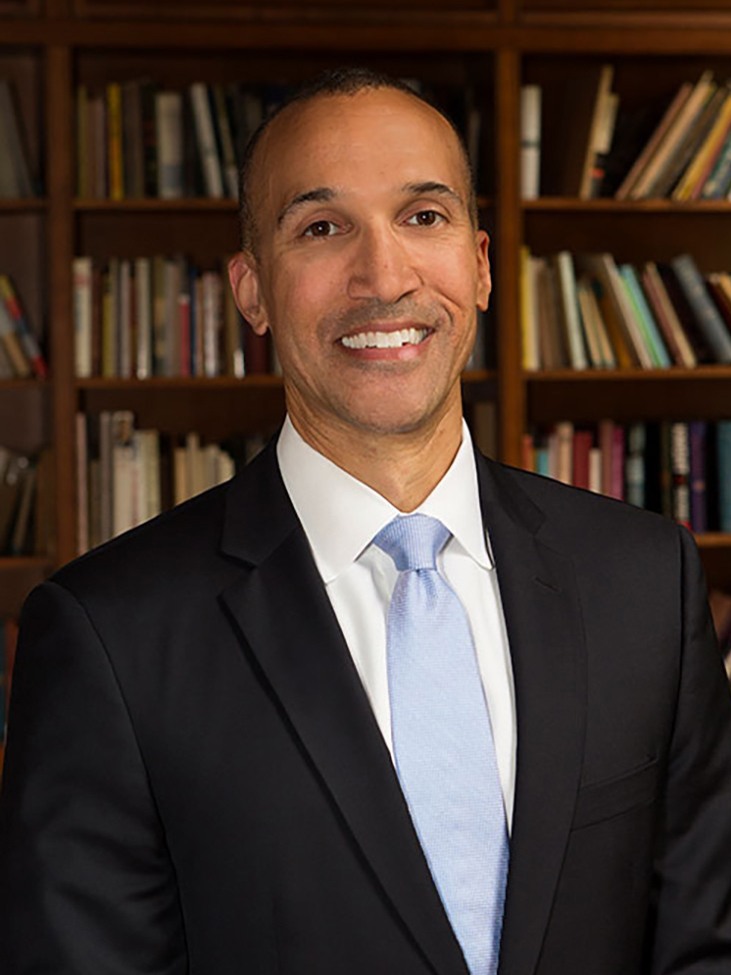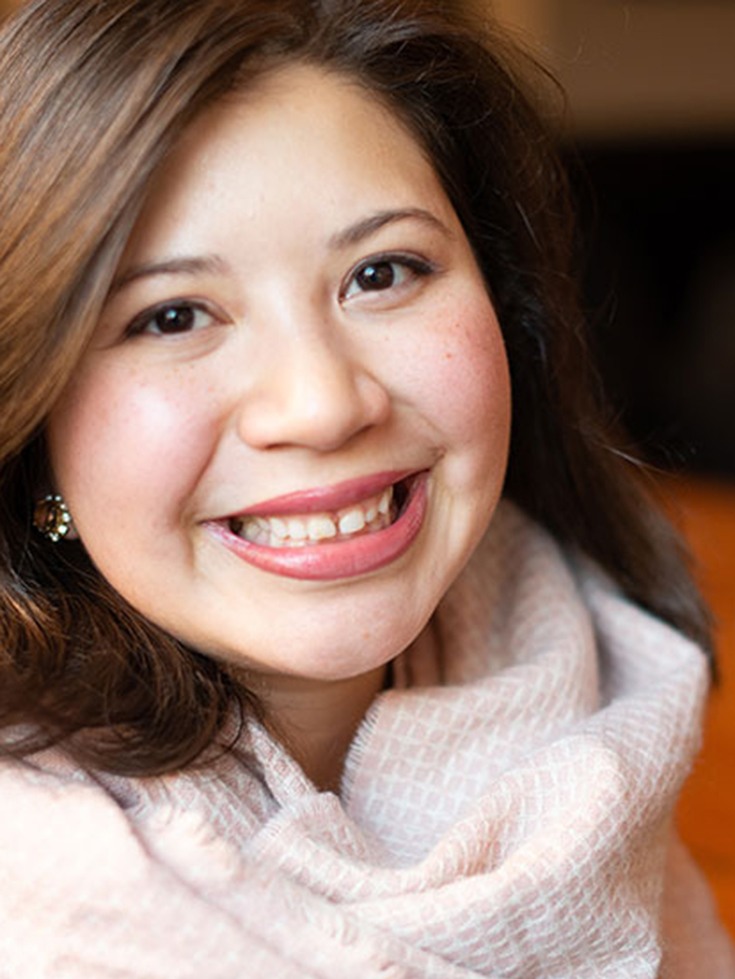A personal touch: Alumni affinity groups extend community to newly admitted students from underrepresented groups
Through personal outreach and events, alumni volunteers are helping newly admitted students of color and LGBTQ+ students answer the question, “Why Brown?”
Deeply woven into Brown’s culture is a collaborative process for problem-solving. One that involves leveraging the collective expertise and perspectives of students, alumni, faculty, staff, and senior leadership in addressing community needs.
A perfect example of this is the grassroots effort forged by alumni to address a complex challenge: increasing the diversity of Brown’s student body.
It all began when Black alumni community leaders began asking themselves how they could have an impact on the number of newly admitted Black students who ultimately enroll at Brown.
“As alumni, we had noticed that [enrollment] numbers [of students of color] weren’t going up in the way we had hoped,” says Judy Sanford-Harris ’74, P’14. “In 2009 when we started, the number of newly enrolled Black American students in the first-year class was 5%*, and we thought ‘we need to do something; what can we do?’”
Harold Bailey ’70 LHD’95 hon., P’99, P’03, who served on both the Corporation Committee on Admissions and Financial Aid and the Presidential Advisory Council on Admissions, brought the concerns to these groups, along with ideas to begin addressing them. With Harold's guidance, they helped foster an innovative partnership between Brown's Office of Undergraduate Admission, the Office of Alumni Relations, and volunteers from the Inman Page Black Alumni Council (IPC) to implement the first matriculation campaign that connected alumni with newly admitted Black students.
Since this first campaign undertaken by IPC volunteers in 2009, the Brown University Latino Alumni Council (BULAC), Asian/Asian American Alumni Alliance (A4), Native American Brown Alumni (NABA), and Brown Alumni Pride Association (BAPA) have implemented similar efforts to reach newly admitted students with shared identities. Alumni affinity groups recruit their fellow Brunonians for these outreach campaigns and serve as resources for newly admitted students and families. Alumni share their insights and answer questions about Brown at in-person and virtual events, and through personal outreach by phone or email.
We want the brightest minds and future leaders to choose Brown. We are incredibly grateful for the time and support our alumni offer and the goodwill they engender through their outreach.

Standing out among the Ivies
Many admitted students are deciding between Brown and other highly competitive and prestigious institutions, which makes personal outreach from alumni and students even more valuable.
“I’ve heard a number of students over the years say ‘nobody else does this’ and I love that we’re unique and that we’re able to stand out,” says Sanford-Harris, who has served as the IPC matriculation campaign co-chair since 2009. “I’d like to think that students and parents will give us a longer look because they say ‘this place really cares.’”
That was certainly the case for Laney Day ’23, who recalled their struggle to choose between 16 offers of admission from highly selective colleges and universities including Stanford and Dartmouth. After visiting most of them during the spring of their senior year of high school, their plans for the future didn’t seem any more certain.
“I went through a similar process at other schools’ accepted students days,” they said. “Meeting their native communities—some larger or smaller than Brown’s. Seeing their campuses. Learning about their academics. By declaration day on May 1, I was paralyzed about where to pick. But then I received a message from a student I’d met at Brown. The other schools I visited also had native communities, but none of them felt like Brown’s did. And no one at the other schools reached out to me after I left their campus.”
Fostering community, sharing experiences
For alumni involved, this experience is personal. “Our alumni love participating in our matriculation campaigns because it is an excellent opportunity to connect with students and provide direct support in such an important stage,” says former BULAC president Araceli Méndez Hintermeister ’12. “This is an opportunity to share their knowledge as former Latinx students who have navigated life at Brown and allow admitted students to ask questions that are unique to the Latinx experience. For many, this is also an opportunity to pay forward the support they received from the Latinx community while they were students.”
During the 2023 admission cycle, 349 alumni volunteers were in touch with more than 1,000 admitted students, helping to contribute to a steady rise in enrollment of diverse students at Brown over the last decade. In 2009, 30% of enrolled undergraduates in the Class of 2013 from the U.S. identified as students of color* (inclusive of students who identify as Asian, Black, Latinx/Hispanic, Native American, and Pacific Islander). By 2022, that statistic for the Class of 2026 had jumped to 44%, with 10% of the incoming class identifying as Black Americans.
According to Logan Powell, associate provost for enrollment and dean of undergraduate admission, this support is helping to make the University more fully diverse and inclusive. “The connections our alumni make with admitted students are critical to our success in enrolling intellectually engaged students from a broad range of backgrounds. We want the brightest minds and future leaders to choose Brown. We are incredibly grateful for the time and support our alumni offer and the goodwill they engender through their outreach.”
Our alumni love participating in our matriculation campaigns because it is an excellent opportunity to connect with students and provide direct support in such an important stage.

Each year, alumni volunteers have been responsive to the feedback and needs of the accepted students and families they meet. Whether it’s been securing a contact person in Brown’s financial aid office to address specific questions, moving to virtual events during the COVID-19 pandemic, or adding Spanish-language events for parents of accepted Latinx students, alumni volunteers are finding new ways to connect.
“While we may not have every answer to every question, it is just as important for students to simply know that they can and will succeed at Brown,” says Méndez Hintermeister. “We want them to know that there is a place at Brown for them and that there is a community of alumni ready to support their journey.”
*The data shared is reflective of the University’s Enrollment Factbook under the details table. The percentages defined in the article are based on the number of enrolled U.S. students who identify as Asian, Black, Latino/Hispanic, Native American, and Pacific Islander. Brown does not collect information on the sexual orientation of incoming students nor the race/ethnicity data for international students during the admissions process.
Interested in getting involved?
If you’d like to learn more about being part of an affinity group matriculation campaign, please submit this quick